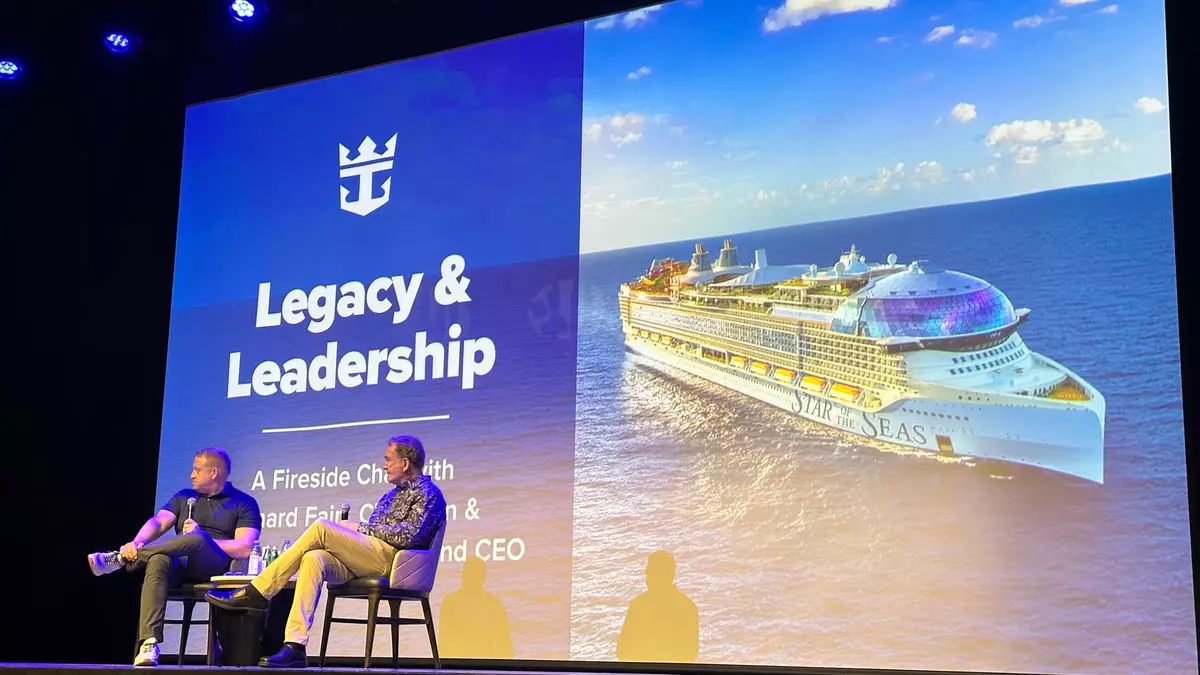In the vibrant world of cruise tourism, the true compass guiding success goes beyond shiny vessels and strategic marketing; it resides in the hearts and minds of its leaders. The dialogue between Royal Caribbean’s CEO Jason Liberty and the venerable Richard Fain reveals an industry at a crossroads—one where enduring culture and bold vision are paramount. Their candid exchange underscores a vital truth: Leadership is not just about steering the ship but about cultivating a culture rooted in excellence, innovation, and shared purpose.
Fain’s pointed remark about Liberty asking “how he’s doing four years too late” exemplifies a culture that values honest reflection over superficial praise. It’s a reminder that effective leadership requires humility, self-awareness, and a willingness to evolve. As the chief architect of Royal Caribbean’s culture for over three decades, Fain’s emphasis on the primacy of people and organizational values sets a powerful precedent. He asserts that profit margins and product innovations are secondary to nurturing a motivated, aligned team—an insight that applies universally, especially as industries face rapid technological change and shifting customer expectations.
Innovation as a Cohesive Force, Not a One-time Wow
Throughout their discussion, innovation emerged not as a mere gimmick but as an integrated element of the cruise experience. Fain’s anecdote about attempting to launch a blimp on Oasis of the Seas—a bold, albeit impractical idea—serves as a metaphor. It exemplifies how even misguided experiments can foster learning, leading to meaningful improvements like the balloon experience at CocoCay.
This insight challenges the industry’s fixation on “wow” factors as standalone attractions. Instead, Fain advocates for a cohesive approach—an experience that resonates beyond a single feature, creating a holistic environment that captivates guests. This philosophy aligns with consumer trends favoring immersive, shareable moments that transcend traditional sightseeing. Liberty’s vision of evolving the guest experience toward authenticity and personalization mirrors a broader societal shift: people crave real, memorable interactions over superficial tours.
Therefore, innovation must be strategic and deeply embedded within a company’s DNA. Lasting success depends on fostering a culture where creative ideas are explored, refined, and integrated into the broader guest journey, rather than chasing fleeting attention with isolated stunts.
Future-Focused Strategy: Beyond Traditional Boundaries
When Fain discusses the importance of planning five years ahead, he touches on a critical mindset often neglected in industries obsessed with quarterly earnings or short-term gains. The cruise sector, historically reliant on the comfort of proven models, now faces disruptive influences—technological advances, environmental pressures, and evolving consumer desires.
Liberty’s commitment to creating experiences that move beyond conventional tours toward personalized, shareable adventures exemplifies future-readiness. Whether through new ships, smaller vessels, or river cruises, the goal remains: craft meaningful moments that forge emotional bonds with guests. This shift signifies a profound evolution in the industry, where authenticity and emotional connection trump spectacle for spectacle’s sake.
The essence of this approach is simple yet powerful: anticipate future needs by aligning innovation with core values. In a world where information moves at lightning speed, and new competitors emerge overnight, the ability to adapt and reimagine the guest experience is a distinct competitive advantage. It demands profound strategic clarity, nimbleness, and an unwavering focus on delivering value greater than what the market expects.
Leadership as a Culture Builder
The lesson from Fain and Liberty converges on a central theme: Leadership is fundamentally about shaping culture. A resilient, purpose-driven organization thrives because its people share a common vision and are empowered to contribute their best. Fain’s assertion that “you can’t lead if you don’t have a culture that will accept leadership” resonates deeply in today’s organizational landscape.
Creating such a culture requires consistency, authenticity, and unwavering commitment from leadership. It means setting high standards, recognizing talent, and fostering an environment where innovation and collaboration are the norm. For the cruise industry—and really for any sector—this is the blueprint for long-term growth: cultivate a workforce aligned with your vision and committed to shared success.
As corporations navigate complex challenges—from economic fluctuations to environmental sustainability—the importance of a strong, adaptive culture cannot be overstated. Leadership must be about inspiring purpose, fostering trust, and enabling teams to navigate uncertainty with confidence.
A Call to Action for Industry Innovators
For emerging leaders and established executives alike, the message is clear: The future belongs to those who understand that lasting success hinges on cultural depth and strategic innovation. The cruise industry, with its potential for extraordinary experiences, stands at an inflection point. It must embrace bold ideas, learn from missteps, and continuously adapt to the evolving landscape of traveler expectations.
Liberty’s stewardship, rooted in the lessons of Fain’s long tenure, exemplifies this mindset. He recognizes that growth is a marathon, not a sprint. And in this marathon, the ability to foster a strong organizational culture—one that values people, champions innovation, and plans strategically—will determine who leads the industry into its next chapter.
Ultimately, leadership in this space is about inspiring others to see beyond the horizon, to think long-term, and to craft an experience that not only fulfills the modern traveler’s desires but also leaves a lasting legacy of excellence and innovation.


Leave a Reply